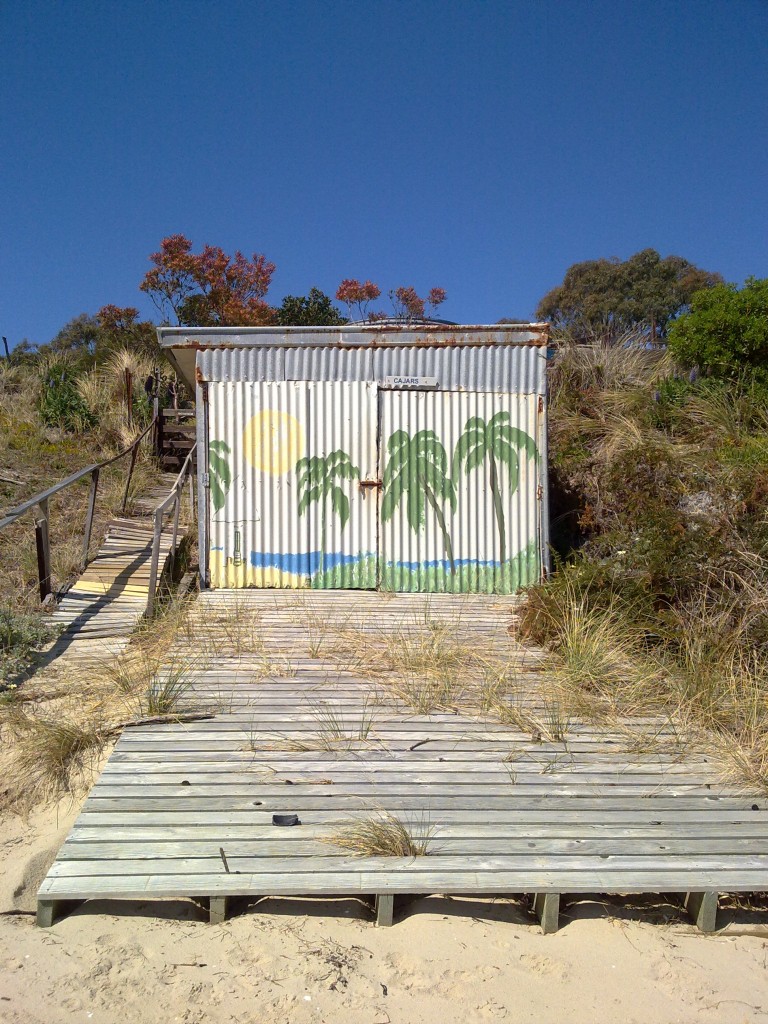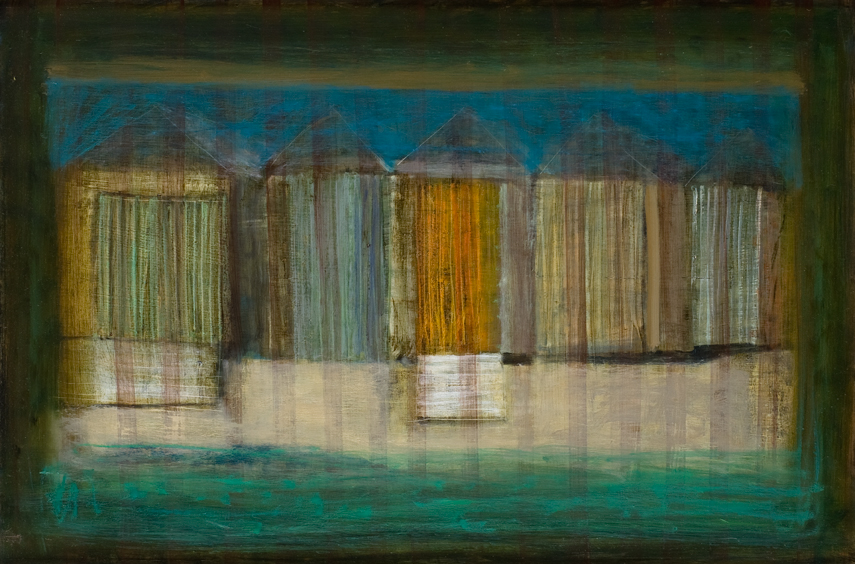
THE BOATSHED PAINTINGS
The old boat sheds of Denne’s Point, North Bruny Island, are characterised by their facades: an endless parade of doors.
Sacrifices are placed at the door. People leave and enter the home or sacred place by the door. It is a space that separates us from one world and another. In Irish mythology Cu Chulainn is the hero of liminality. The ancient Irish brigade of poet warriors, were called the Fianna. Cu is a leader of the Fianna and he does not stay permanently in a tribal community, as does another Irish hero, Fionn or Finn. They receive knowledge by staying on the edge. O’Connors sees Cu Chulainn as the “hero of liminality.” [O’Connor, Beyond the Mist, pp. 225 – 6]
In ancient Irish mythology the poet is a fili.
The poet or fili, was one of the most important and honoured figures in ancient Ireland. It was a role that combined several functions: proclaimer of truth, upholder of tradition, seer and possessor of otherworld knowledge. Possibly the fili stepped into the vacant role of the druid, and his role has a certain sacred quality about it. Both druid and poet are characterised throughout Irish mythology as possessors of special knowledge and power derived from the otherworld. Indeed the poet, or wordsmith, still remains the most enduring symbol within the Irish psyche. [Peter O’Connor, Beyond the Mist, p. 223. Allen & Unwin, 2001]
They were enlightened; they had insight, perception and knowledge.
When one looks at all the known characteristics of the ‘fennidi’, one sees that their defining characteristic is marginality, or liminality. They are as Marie-Louise Sjoestedt asserts, the heroes outside the tribe. … The word ‘liminality’ comes from the Latin word ‘limen’, meaning ‘doorway’ or ‘threshold’. It is a place of transition, flux and ambiguity. Little is fixed in liminality, and consequently it generates a sense of vulnerability. Within the Greek mythological tradition liminality is Hermes’ territory; Hermes being the guide of souls. In the rites of many cultures the ambiguous quality of liminality is seen as a sacred state, perhaps because it is a transitional state that connects this world to the otherworld. [Peter O’Connor Beyond the Mist, pp. 224-5]
In our time we view our subconscious as the otherworld of the ancients’ perception. O’Connor’s book has the sub topic “what Irish mythology can teach us about ourselves” . Their is much to be learned through these two liminal heroes: Cu Chulainn and Fion Mac Cumhaill. They move through non-linear time over hundreds of years through transitional space, weaving their adventures in and out of Irish mythological history and time, which are one and the same.
… But the poet Keats, more than anyone else, most clearly stated the vital link between liminal space and creativity. In a letter to his brother in December 1817 he says that he has come to understand the essential quality of creativity, specifically literary creativity. He calls this quality ‘negative capability’; that is where man is capable of being in uncertainties, mysteries, doubts, without any irritable reaching after the fact and reason. [12] Fionn Mac Cumhaill could be seen as providing, among other things, a paradigm for negative capability. It is negative capability that allows us to tolerate not-knowing long enough to actually know. Its presence in a person is perhaps the factor that determines whether someone merely accumulates knowledge, or actually has understanding that leads to wisdom.[O’Connor, Beyond the Mist, p. 228]
These Bruny boat shed paintings, representing walls with doors, were a joyful part of my transition, both physical and spiritual from a darker to a lighter period in my life and a return to creativity and above all, how to live.
